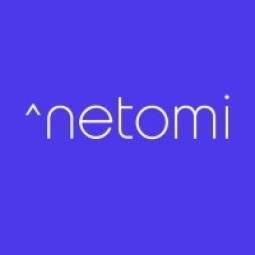适用功能
- 采购
- 销售与市场营销
用例
- 需求计划与预测
- 租赁金融自动化
关于客户
Aventon 是一家专门生产创新电动自行车的公司。疫情期间,对其产品的需求大幅增加,导致客户支持请求激增。该公司有一个小代理团队,平均每天 500 张门票,让他们不堪重负。雅文顿相信技术和自动化的力量,并坚持“少说多做”的理念。他们正在寻找一种解决方案,可以帮助他们扩展运营规模、通过首选渠道与客户联系以及转移来自现场客服的可重复查询。
挑战
Aventon 是一家创新型电动自行车公司,在管理客户支持请求方面面临巨大挑战。在疫情期间,电动自行车的需求猛增,导致客户支持请求增加。这个小型客服团队平均每天处理 500 张工单,电子邮件回复时间平均为 1.5 - 2 周。在 2021 年 6 月的旺季,情况进一步恶化,由于积压了 2,400 张工单,他们不得不禁用聊天功能。Aventon 需要一个解决方案来扩展其运营规模,并通过客户首选渠道与他们联系,同时转移来自现场客服的重复查询。他们正在寻找一种可以轻松与现有技术堆栈集成的解决方案,其中包括 Zendesk(CRM)、Shopify(订单管理)和 Helpjuice(知识库)。
解决方案
2021 年末,Aventon 在聊天和电子邮件中推出了 Netomi 人工智能助手 Bolt。Bolt 旨在快速解决售前和售后的重复查询,包括“我可以获得订单的预计发货日期吗?”和“如何以及在哪里安装自行车上的反光镜?”等问题。这款人工智能助手能够通过聊天转移 50% 的查询,通过电子邮件转移 15% 的查询,从而大大减轻了客户支持团队的工作量。由于能够将重复问题转移给 Bolt,代理现在可以专注于处理复杂而细微的请求,提供全天候支持。该解决方案不仅提高了客户支持团队的效率,还通过缩短响应时间增强了客户体验。
运营影响
数量效益

Case Study missing?
Start adding your own!
Register with your work email and create a new case study profile for your business.
相关案例.

Case Study
Digital Transformation in Insurance: A Case Study of Menora Mivtachim
Menora Mivtachim, one of Israel's largest pension fund and insurance carriers, was facing a significant challenge due to demographic trends in Israel. The growing rate of retirement planning and services was putting unprecedented pressure on the already strained insurance sector. The pension claims process was bottlenecked with complexities, bureaucracy, and errors. Menora Mivtachim's existing pension process was heavily manual and spreadsheet-based, requiring a team of 10 full-time employees to manage. The process involved gathering applicant information, conducting personal surveys, compiling bank information, and finalizing agreements. To leverage the growing opportunity in the retirement sector and position themselves as innovative insurtech leaders, Menora Mivtachim needed to digitalize their process, streamline the claims experience, and reduce quote times through automated processes.

Case Study
ANZ Bank's Digital Transformation with Nintex Advanced Workflow
ANZ Bank, one of the top 50 banks in the world and the fastest-growing bank in Indonesia, was facing a challenge with its rapidly increasing transaction volume. The bank's existing business processes and workflow were becoming overwhelmed. Like most banks in Indonesia, ANZ was manually handling document submission and verification. Customers filled out paper loan applications and supporting documents, then delivered them to bank branches by mail or courier. Branch officers traveled to the bank’s headquarters or used postal mail, email, and phone calls to submit loan documents for verification. Lost or inaccurate documents created more emails and phone calls. Additionally, ANZ had to adhere to strict verification and financial regulations, including the Foreign Accounts Compliance Act. This act requires that all banks outside the United States provide key information about U.S. clients, including citizenship validation, to the Internal Revenue Service–a complex yet crucial process.

Case Study
Automation in Mining: Unleashing Productivity and Efficiency with 5G
The mining industry, a significant contributor to global economic activity with revenues exceeding USD 500 billion, is facing a challenge of improving efficiency and profitability. The industry is gradually shifting its focus towards automation as the next area of opportunity. Boliden, one of the world's most successful mining companies, operates the Aitik mine, the largest open pit in Europe. The Aitik mine is expanding, and with the increase in production from 36 million metric tons of ore to 45 million metric tons, the amount of rock removed will also increase significantly. However, increasing the number of machines required for rock removal in a busy mine is not a straightforward task. Additionally, every blast creates toxic gases that need to dissipate before humans can enter the area and begin excavation. The challenge lies in improving efficiency, managing the increased production, and ensuring safety in the harsh mining environment.
Case Study
Pepsico's Transformation to Smarter Sales Forecasting with Designer Cloud
PepsiCo, a global consumer packaged goods company, faced a significant challenge in calibrating sales forecasting to supply the right product quantities to its retailers. The sales forecast incorporated a variety of data, including warehouse data, store stock data, and promotional forecast data, all of which were provided by retailers in different file formats and delivered using various methods. The primary challenge was the speed of preparing a sales forecast. With the existing Microsoft Access and Excel-based processes, the time required to prepare this data was so extensive that analysts could only leverage it once a month or not at all. This inefficiency risked under or oversupplying retailers, potentially impacting PepsiCo's business operations and customer relationships.

Case Study
Streamlining Agricultural Automation with Eaton’s Package Solution
Grossi Electric, a full-service electrical contracting company, was tasked with facilitating the hulling, dehydrating, and preparation processes at a walnut processing plant in Waterford, California. The company aimed to explore innovative options for creating cleaner and more efficient control panels that would eliminate the intensive time, labor, and costs associated with excessive point-to-point wiring. As a rapidly growing electrical contracting company, Grossi Electric was also concerned about managing risk and cost while attempting to establish a new and unfamiliar service offering in a mature market for control products. The walnut processing plant presented a prime learning opportunity for the company to discover the best way to build more tailored control panels for its customers. The challenge was to enable a lean automation process that was smarter, simpler, more effective, and of unique advantage for clients.

Case Study
Dell's Transformation: Boosting HR Productivity with RPA and Workday
Dell Technologies, a global tech giant with over 160,000 employees, was grappling with high-volume and repetitive transactional HR processes. The company was seeking to improve efficiency and cost-effectiveness while freeing up HR employees for higher-value, strategic work. The challenge was to eliminate transactional work for end-to-end processes such as open requisition recruiter assignments, onboarding process reminders and status updates, and offer status management. This would allow HR employees to focus more on person-to-person interactions.







